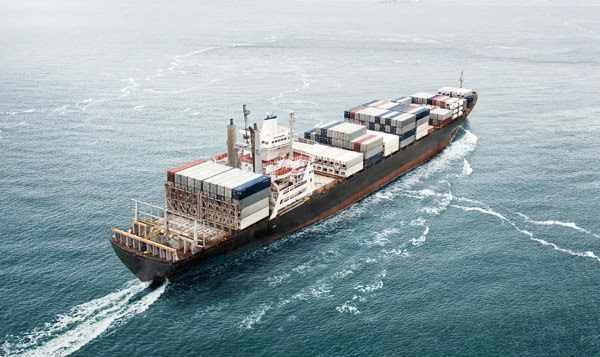Global Marine İnsurance Premiums

A new report from the International Marine Insurance Association (IUMI) says global marine insurance premiums rose 6.4% to $33 billion last year.
Shipping reinsurance’s Global Marine Insurance Report says this increase is due to rising global trade volumes, a stronger US dollar, increased offshore activity and higher vessel values, cargo, boat, offshore energy and shipping liability premiums rising in 2021. Premium growth was observed especially in Europe and Asia.
Astrid Seltmann, vice chair of the Figures and Figures Committee at IUMI, said: “Building on the gains made in 2020, 2021 has been another positive year for marine insurers. It was the year when global trade saw a temporary recovery, absolute premiums rose, the impact of losses was not good, and loss ratios improved as a result.”
“However, this position is tempered by the economic uncertainties the world is facing today. We report this data at a time when several shocks hit a world economy already weakened by the pandemic. There is no end in sight to the war in Ukraine, rising global energy costs and inflation, a bleak outlook for trade, and the possibility of more climate and pandemic-related disruptions. Marine insurers are working on some extremely complex issues.”
IUMI also said global revenue was split, with Europe at 47.2%, Asia and the Pacific at 29.3%, Latin America at 10.3% and North America at 7.7%. He said cargo continued to represent the largest share in 2021 with 57.4%, boat 23.5%, offshore energy 11.8% and marine liability (excluding IGP&I) 7.3%.
The report also said that global premiums from the offshore energy sector continued to increase in 2021, reaching $3.9 billion in 2020, representing a 6.9% increase. 2019). Offshore energy insurance claim typically follows oil prices as projects become viable. Historically, there has been an 18-month time gap between improved oil prices and allowable offshore spending and reactivation of units. Oil prices are high, but volatile.
Lloyd’s of London and the International Insurance Association (IUA) continue to dominate the majority of the market with 33.2% and 32.1% market shares respectively. In 2021, claims were lower than premiums collected. However, a shadow still hangs over the offshore energy market in the form of potentially significant unquantified losses from 2019.
For 2021, the global premium base for the cargo market increased 9.9% to $18.9 billion, driven by a stronger dollar and increased global trade volumes. The cargo premium is a reflection of the value of goods transported and global trade volumes.
However, in July 2022, the International Monetary Fund released a pessimistic forecast that global economic growth will slow to 3.2% in 2022, from 6.1% last year.
Loss rates in most markets continued to improve as a result of increased premium volume, driven by recent harmless claims. For Europe, the gross loss rate for the insurance year 2021 is estimated to end at 50%, while other regions reported the following 2021 accounting year loss rates: USA: 41% (damages incurred), Asia: 45% (claims paid only) and Latin America 43% (paid claims). A return to pre-Covid activity in 2022 is likely to increase the impact of claims on insurance performance.
Cargo insurers continue to face constant challenges, including increased ship fires, misrepresented cargo, stronger winds and worsening severe weather conditions such as waves, flooding and wildfires. The risk of major event losses continues to increase with increasing value accumulation on larger vessels and single port sites than ever before.
Global premiums related to the ocean boat industry rose 4.1% to $7.8 billion in 2021. There was continued strong growth in the northern region and China, but much weaker in the UK (Lloyd’s) market, where the decline in recent years has continued.
The total value of insured ships increased significantly in 2021, mainly due to the massive increase in container ship prices, which rose by over 35%. Dry bulk and general cargo carriers also saw gains in 2021, but all other segments fell.
After a subdued year for claims in 2020, especially when shipping activity declined in the high-value cruise sector, 2021 saw a surge in Hull & Machinery claims. However, demands remain low. Total losses amounted to 0.06% of the total global fleet and partial damages amounted to 0.14%. The demand cost per ship increased slightly in 2020, but is still at historically low levels. However, rising steel prices and labork costs are expected to affect future boat demands.
As reported in previous years, the frequency of fires in both the engine room and cargo areas remains a concern, particularly for car carriers and container ships. In 2021, more than 1% of the container ship fleet had fires, and 0.4% of the fleet had fires worth over $500,000.
In terms of contractor profitability, results showed continued improvement. It is estimated that the 2021 insurance year gross loss rates for Europe will end at 65%. This includes some expected increase in 2020 compared to 2020 which showed exceptionally good results as a combination of pandemic effects, exceptionally low damage impact due to reduced vessel activity in some segments and increased premiums. Reported loss rates for fiscal year 2021 for other regions: USA: 70.5% incurred claims) Asia: 67% (paid claims) Latin America: 54% (paid claims). However, a return to full shipping activity, value increases, inflation of various costs affecting repair costs, new ship designs, propulsion and fuel types are likely to affect forward demand trends.
Look at us here we are here.





